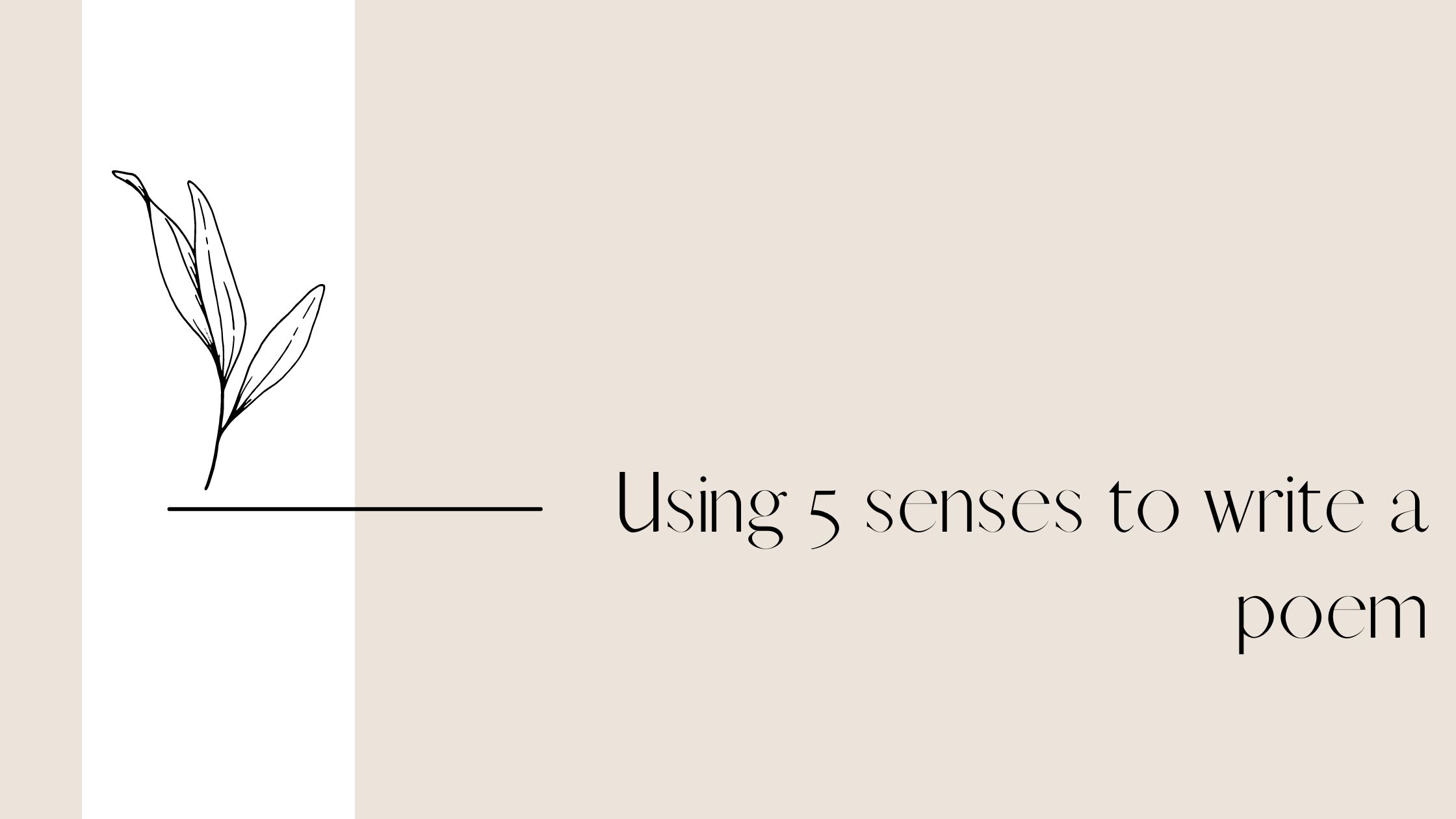Using 5 senses to write a poem
- March 13, 2023
- Publishing
Have you ever wanted to get creative and explore writing, but felt intimidated? Don’t worry. You can skip a novel or a long-form essay right away. One excellent way to begin is by writing poetry. Poems are short but powerful, relying heavily on your five senses to convey their message to the reader. In this article, we will be going to walk you through how you can use your five senses taste, touch, sight, smell, and hearing to craft a beautiful and meaningful poem.
Crafting a Vivid Image With the Sense of Sight
When you write using the sense of sight, you don’t just describe what something looks like, but what it means to the writer. Take a moment to visualize your topic and begin crafting an image with words. Here are some tips to help you use the sense of sight effectively:
- Make note of colors: Colors can evoke strong emotions; they are attention-grabbing and often a good place to start.
- Describe size and shape: Writing about size and shape can help you draw your readers in. For example, rather than just saying “the sun was bright”, try “the blazing sun seemed to swell with each passing minute.”
- Consider direction and distance: You could say “the horizon stretched across the sky”, or you could give more detail by writing “The faint silhouette of the horizon stretched out before me as far as I could see.”
Writing About a Tactile Experience With Touch
Writing about your topic with touch is an effective way to get your readers to really experience it. Think of the words you can use to help them feel the sensation at their own fingertips!
Tips for Writing About Touch
- Describe how something feels on your skin. Is it smooth, or does it have a rough texture?
- Evoke a response from the reader. Do you want them to shiver in anticipation or feel the warmth of a pleasant summer’s day?
- Utilize similes and metaphors that incorporate other senses such as taste or sound.
Expressing a Flavourful Moment Through Taste
Expressing a flavourful moment with your taste buds is an incredibly powerful tool when writing a poem.
Think about the last time you had your favorite meal. How did the different flavors of each ingredient blend together? Where did they come from? Was it something that brought you comfort or nostalgia? Using taste to capture an emotion goes beyond just describing food. It could be the scent of flowers in bloom or the feeling of cool water running down your skin on a hot summer day. Whatever it is, try to put yourself in that moment and use words to describe how it felt and what it meant to you.
Stimulating the Smell of Scent in Poetry
Using the sense of smell in your poetry is a great way to help create vivid images for your readers. Think about how different smells can trigger emotions or memories: a freshly cut lemon or a whiff of perfume can bring back childhood memories while burning wood might make someone feel cozy and nostalgic. To incorporate smells into your poem, it’s best to think of the comparison between contrasting scents to create imagery for your readers.
Incorporating Sound Into Your Poem
When you’re writing a poem, it’s important to think about how sound can be incorporated. You don’t quite feel the same connection to written words as you do when you’re speaking them out loud. To get the full effect of your poem, use sound effects to add a dynamic element. For example, let’s say you’re writing about birds flying above a meadow in the early morning. How can you incorporate sound into your poem? Here are some ideas:
- Alliteration: Describe the birds’ movement through the air with alliterative phrases like “swooping and soaring,” and “fluttering and flapping.”
- Onomatopoeia: Use words that mimic sounds, such as “coo,” “chirp,” and “whistles” to describe bird songs in the background
- Rhyme: As you write your poem, use rhymes to draw attention to certain words or phrases. This will help your readers create a more vivid image of what’s being described in their minds
Using the five senses when writing a poem is a great way to add depth and emotion. It can help you to create vivid images in the viewer’s mind and provide an effective way to convey a message. Whether you’re writing about a place, a person, or an experience, think about the various senses that may be applicable to your topic.






